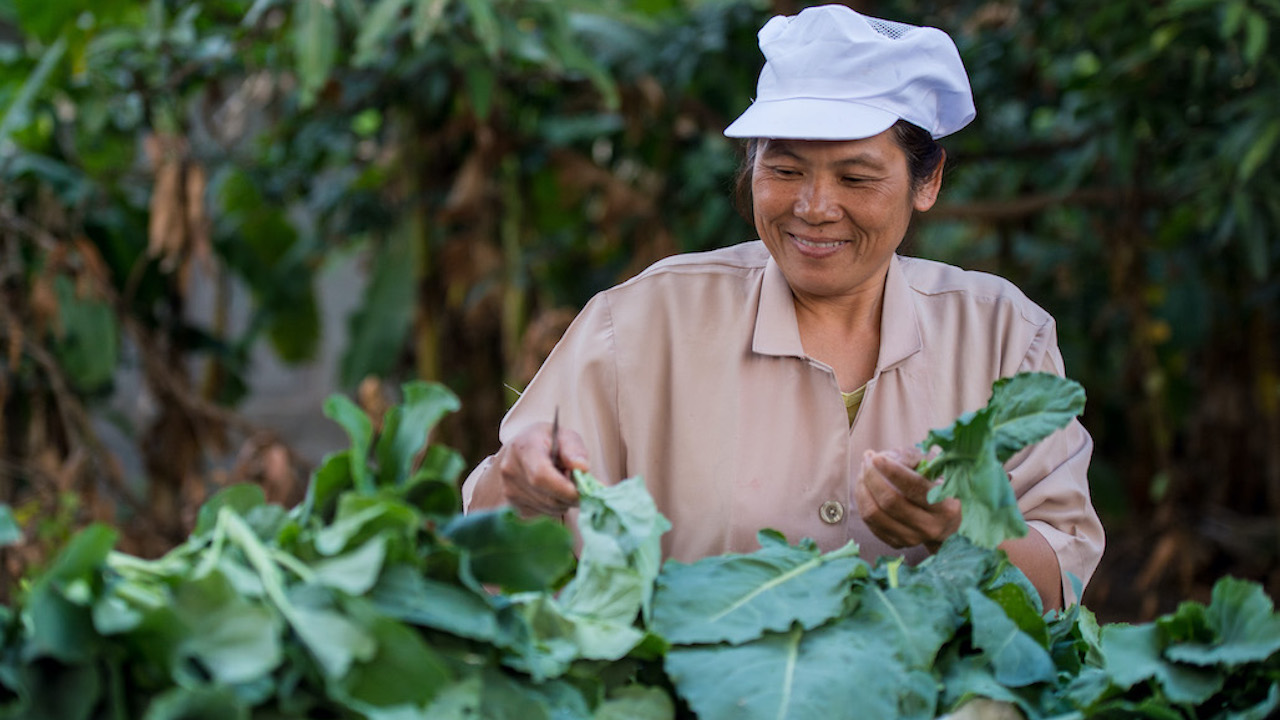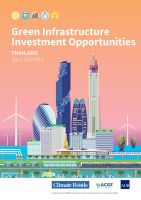To Make Agriculture Sustainable, ASEAN Wants Farming to Be Environment- and People-Friendly

Sustainable agriculture is a way of producing clean, healthy, and nutritious food, while preserving the environment, providing an equitable distribution of economic wealth, and ensuring the health and safety of not just the food produced but also the health and safety of farming communities. Photo credit: ADB.
This entails shifting to greener farming practices, adopting the circular economy model, and protecting the well-being of farming communities.
Agriculture is in Southeast Asia’s DNA. Eight out of 10 countries in the Association of Southeast Asian Nations (ASEAN) are dependent on agriculture and its production, with the region being a major producer and exporter of palm oil, crude rubber, rice, sugar, seafood, and fruits. However, climate change, overfishing, unsustainable farming methods, and other problems afflict the sector.
This is why ASEAN is shifting to sustainable agriculture. It is a way of producing clean, healthy, and nutritious food, while preserving the environment, providing an equitable distribution of economic wealth, and ensuring the health and safety of not just the food produced but also the health and safety of farming communities.
The ASEAN guidelines on sustainable agriculture were adopted by members in October 2022. Members recognized that “hundreds of millions of people remain undernourished as local agricultural systems fail to provide enough nutritious food, and economic factors prevent equitable distribution of available food.”
Citing findings from a 2019 global food report, the guidelines noted that based on consumption trends, the world will need to boost food production by more than 50% by 2050 to feed nearly 10 billion people.
“The world urgently needs to change the way it produces and consumes food. In the coming decades, the global agricultural system must find ways to meet pressing but sometimes competing needs,” ASEAN said in the guidelines. Agriculture must continue to be an engine of inclusive economic and social development that contributes to poverty reduction, while reducing its environmental footprint.
The guidelines cover agriculture, aquaculture, and animal husbandry systems; the use of renewable energy systems; the interaction between the farmers, inputs, land, water, and the environment; and the sustainability of farms, communities, and the economy.
The guidelines underscore the importance and relevance of new sustainable and circular agriculture policies; provide a transition mechanism where policies can be translated into strategies and then turned into practical implementation plans; guide and promote strategies in sustainable circular agriculture; provide examples of how to develop agricultural sustainability; and encourage stakeholders to integrate sustainability in their operations and support the development of sustainable and circular agriculture industries.
Multiple challenges
The transition to sustainable agriculture faces multiple challenges. While there is an urgent need to boost farm output, additional food must be produced without expanding areas allowed for agriculture to protect natural ecosystems critical to biodiversity and climate change mitigation. Cropland and pastureland are projected to increase by nearly 600 million hectares by 2050 if countries worldwide fail to act on land use, the guidelines noted, citing the 2019 report.
Farming is a significant and growing source of carbon dioxide emissions. In boosting farm production, countries need to make sure they stay under the 1.5°C rise in temperature target under the Paris Agreement. To reduce emissions, at least 585 million hectares of agricultural land must be freed up for reforestation, according to the 2019 report. This can be done through productivity gains and reduction in demand.
The COVID-19 pandemic exposed vulnerabilities in the agrifood systems. For example, border controls disrupted the movement of farm inputs, like feeds and fertilizers, across the globe. This resulted in price increases for these commodities.
Five key principles
According to the guidelines, there are five key principles in pursuing sustainable agriculture for ASEAN:
- Improving efficiency in the use of resources.
- Conserving, protecting, enhancing natural ecosystems and promoting and enhancing natural resources and communities.
- Protecting and improving rural livelihoods and social well-being.
- Enhancing the resilience of people, communities, and ecosystems.
- Promoting good governance of both natural and human systems.
One of the key strategies identified is to improve soil health and curb overuse of fertilizers as residues end up in the soil. This also entails maximizing soil cover and protecting biodiversity.
The guidelines also underline the importance of reducing greenhouse gases from agriculture-related activities. The sector accounts for 24.8% of global emissions.
Reducing emissions entails enhancing the soil as a carbon sink; deploying technologies and materials to reduce and capture livestock and crop-related emissions; using renewable energy systems for as many farms as possible; valorizing agricultural and food wastes (e.g., recycling, reusing, composting); and developing novel farming systems (e.g., vertical farms, indoor farms).
ASEAN countries are also urged to adopt circular agriculture and reduce use of imported mineral fertilizers by valorizing or converting agriculture and food wastes into feed and fertilizer inputs. The region’s rubber, oil palm, rice, and other industries produce large amounts of agricultural biomass wastes. Indonesia, Malaysia, and Thailand produce 854.1 million tons of biomass waste from the oil palm industry alone. Shifting to a circular economy can also address food wastes in the region, which amount to 53.23 million tonnes per year.
Leveraging modern agritech systems can help the region switch to sustainable agriculture. For instance, drones can be used to monitor farm water levels, humidity, temperature, and fertilizer requirements. Internet of Things devices equipped with sensors to track farm data in real time, along with data analytics, can help farmers plan production and harvest better.
To enhance rural livelihood and well-being, smallholder farmers should be connected to markets with better purchasing power. This will improve smallholders’ livelihood opportunities and income.
Examples from Thailand and Europe
The guidelines cite Thailand and Europe’s experiences in switching to more sustainable agriculture to provide insights for ASEAN countries.
The European Green Deal, which outlines the European Union’s growth strategy while addressing the impacts of climate change, has provisions on sustainable agriculture. “The European Green Deal provides us with an insight into a sustainable food production strategy, which has been implemented by a group of countries to chart their sustainable growth together,” ASEAN said in the guidelines.
EU’s “farm to fork” agriculture strategy aims to make 25% of farm output organic by 2030, reduce the use of pesticides by 50% by 2030, reduce the use of fertilizers by 20% by 2030, create sustainable food labelling, and reduce food waste by 50% by 2030.
The guidelines also cite Thailand’s Bio-Circular-Green economic model, which was adopted in 2021. It focuses on promoting four industries: agriculture and food; medical and the wellness industry; bioenergy, biomaterials, and biochemicals; and tourism and the creative economy. Strategies include migrating from low-value commodities to value-added and premium products; reducing and valorizing wastes; deploying smart farming technologies; focusing on food and product safety; and developing higher-value agrifood products.
This article was first published by BIMP-EAGA on 26 July 2023.

BIMP-EAGA
The Brunei Darussalam–Indonesia–Malaysia–Philippines East ASEAN Growth Area, or BIMP-EAGA, is a cooperation initiative established in 1994 to spur development in remote and less developed areas in the four participating Southeast Asian countries.

